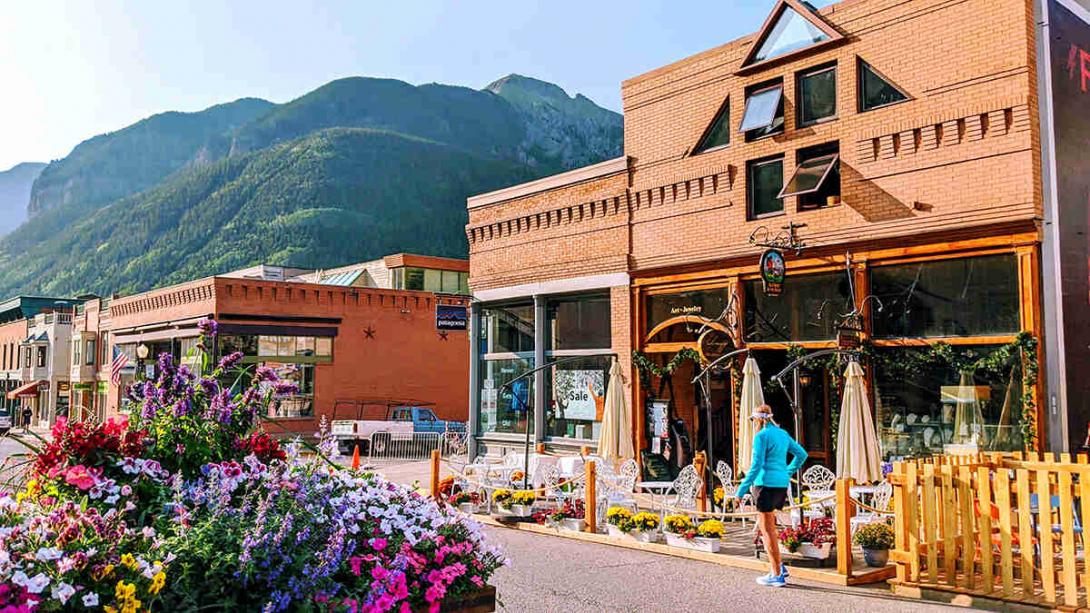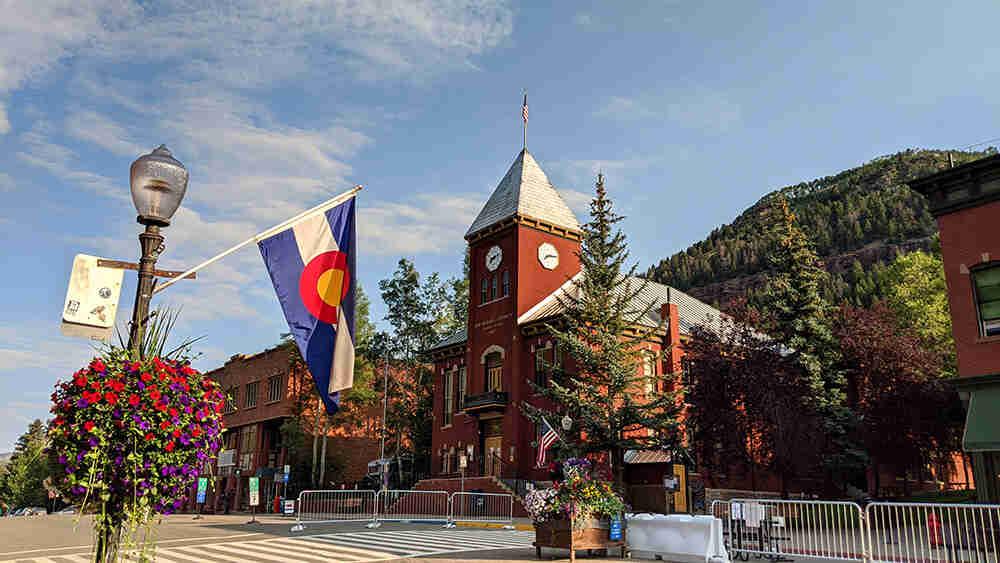Telluride
Full Article
Telluride is a small town located in the San Juan range of the Rocky Mountains. It is the county seat of San Miguel County. Like many other mountain towns, it was founded as a mining center in 1878. Originally, it was named “Columbia,” but in order to avoid being mistaken for a town in California the post office changed its name to Telluride, a metallurgical term that boded well for the future.
Located in a box canyon, Telluride is surrounded on three sides by huge mountain walls, which are home to the Telluride Ski Resort and Bridal Veil Falls. Today, it is a popular year-round vacation destination for people from all around the world. In the summer, the Telluride area is prime country for mountain biking, rock climbing, hang gliding, and other outdoor activities. The winter brings skiers, snowshoers, snowmobilers, and other winter sports enthusiasts. At the end of every summer, the town hosts the well-known Telluride Film Festival, which celebrated its fortieth anniversary in 2014.
Mining Town
Telluride began when prospectors staked out several claims for gold and silver found in the valley in the 1870s. As more miners made claims, they found that Telluride was particularly rich in silver. Silver was not the only mineral mined there—gold, zinc, copper, and lead were also mined—but it did drive the mining industry during its boom period in the 1880s. For nearly a century, Telluride’s only industry was mining. There were local businesses of course, but the only thing keeping it on the map was silver.
In 1890 Telluride had a population of 766. That decade, which saw the ruin of many other Colorado mining towns as a result of the repeal of the Sherman Silver Purchase Act in 1893, Telluride’s rich gold veins kept it booming. In 1891 Lucien Lucius Nunn solved a regional energy crisis by throwing the switch at his Ames Power Plant on the San Miguel River, the first station to deliver alternating-current power for commercial use. The power reached Telluride in 1894, providing lighting for streets, homes, and mines. By 1895 Telluride’s population had increased to almost 2,500. A brick schoolhouse went up during the decade, as did a number of banks and other businesses, including the first-class Sheridan Hotel. Hall’s Hospital was built in 1896 and operated until 1964. By the late 1890s, a series of tramways connected by heavy iron cable helped move people and materials between high-altitude mines and camps.
A devastating flood roared through the town in 1914, but residents quickly rebuilt and got the local mines back up and running. The next year, miners began to extract large amounts of complex ore containing not only gold and silver but also lead, zinc, copper, and iron from the nearby Black Bear Mine. While metal mines were shutting down across the state during the early twentieth century, the mines around Telluride continued to produce well into the 1920s.
Ski Industry
As a ski resort, Telluride is relatively young. Joseph Zoline, a wealthy entrepreneur from Beverly Hills, California, founded Telluride Ski Resort and installed the first chairlift in 1972. Zoline’s dedication to its development as a resort, as well as the attractiveness of the town and everything else it had to offer, made Telluride one of the premier places to live for wealthy people seeking second homes in Colorado. As mining slowed and ended in the 1970s, few mining families could afford the rising costs of real estate or the taxes on their mining claims, creating a demographic shift typical of mining towns turned ski destinations.
After the mining industry declined and the skiing industry began to take off, miners were replaced by young people often described as hippies. These newcomers envisioned a new kind of western resort town that would feel less “corporate” and contributed to Telluride’s vibrant community. At one time the younger population even campaigned to ban cars from the city and limit transportation to horse and buggy. This ordinance never passed but is a good example of how hard the young crowd fought to keep Telluride natural and free from corporate influence.
Today
Today, as Telluride Ski Resort attracts plenty of visitors and attention, it looks as if the young people have failed in their efforts to keep the town free of corporate influence. Yet the attention has certainly not been for the worse—Telluride today is a bustling town that hosts one of the most popular small film-festivals in the world, and its dynamic community has worked hard to preserve the town’s rustic mountain feel.









